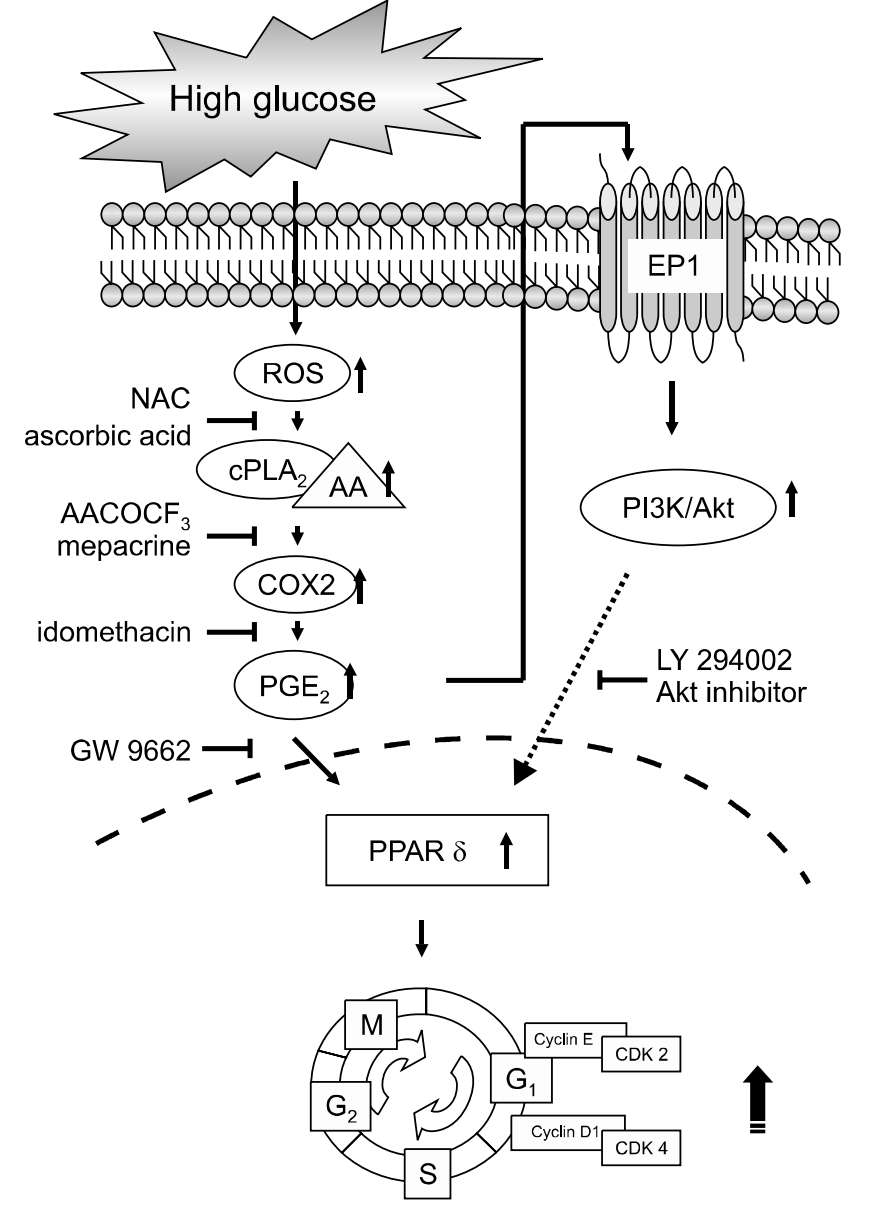Creative Biolabs is committed to providing a diverse range of stem cell research services, encompassing the physiological and pathological elucidation under the regulation of Peroxisome Proliferator-Activated Receptors (PPARs).
PPARs belong to the nuclear receptor superfamily, serving as ligand-activated transcription factors that govern lipid, lipoprotein metabolism, and glucose homeostasis. Their primary functions include regulating cellular proliferation, differentiation, apoptosis, and participating in physiological processes such as inflammation modulation.
 Fig.1 Hypothesized model for PPAR signaling in
high glucose mouse.1
Fig.1 Hypothesized model for PPAR signaling in
high glucose mouse.1
PPARs are classified into three subtypes: α, γ, and δ, each expressed in different tissues and interacting with specific ligands to regulate the expression of their respective target genes.
Stem cell function is subject to extensive signal regulation, and studies have demonstrated that metabolic signals generated by the PPARδ-fatty acid oxidation pathway promote the maintenance of hematopoietic stem cells. Lack of PPARδ severely impairs the function of hematopoietic stem cells in vivo.
 Fig.2 Linoleic acid in stem cell metabolic.2
Fig.2 Linoleic acid in stem cell metabolic.2
PPARs are associated with various diseases, including lipid metabolism disorders, diabetes, inflammatory diseases, and skin diseases. They play a crucial role in regulating cellular metabolism, inflammatory responses, and tissue repair.
Linoleic acid, a polyunsaturated essential fatty acid and a natural ligand for PPARα and PPARγ, activates keratinocyte proliferation and lipid synthesis, thereby enhancing skin barrier repair. Data have shown that skin prone to acne and other dermatoses (human and animal) often lack linoleic acid.
PPARs are involved in the regulation of lipid and glucose homeostasis, thus closely related to related diseases such as hyperlipidemia, diabetes, or some inflammatory diseases. Intervention strategies targeting PPARs are considered potential means to improve symptoms.
Creative Biolabs is dedicated to providing comprehensive, professional, and customized services to assist you in entering the field of stem cell research and to provide comprehensive support for your scientific research and preclinical work. We offer comprehensive PPAR in vitro research services to help you understand the critical role of PPARs in physiological pathways and pathology and to develop potential disease intervention strategies.
Please do not hesitate to contact us for robust support.
References
For Research Use Only. Not For Clinical Use.